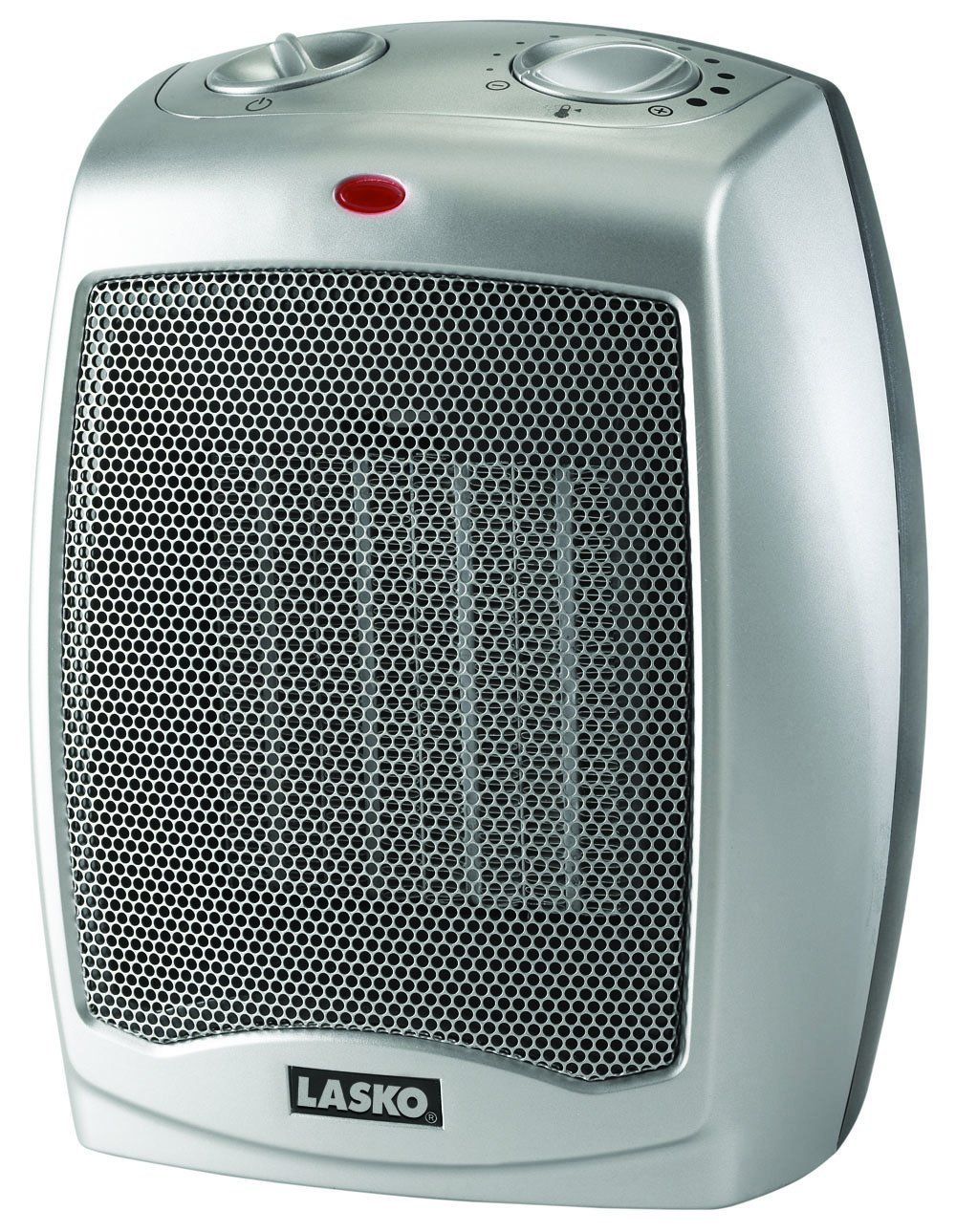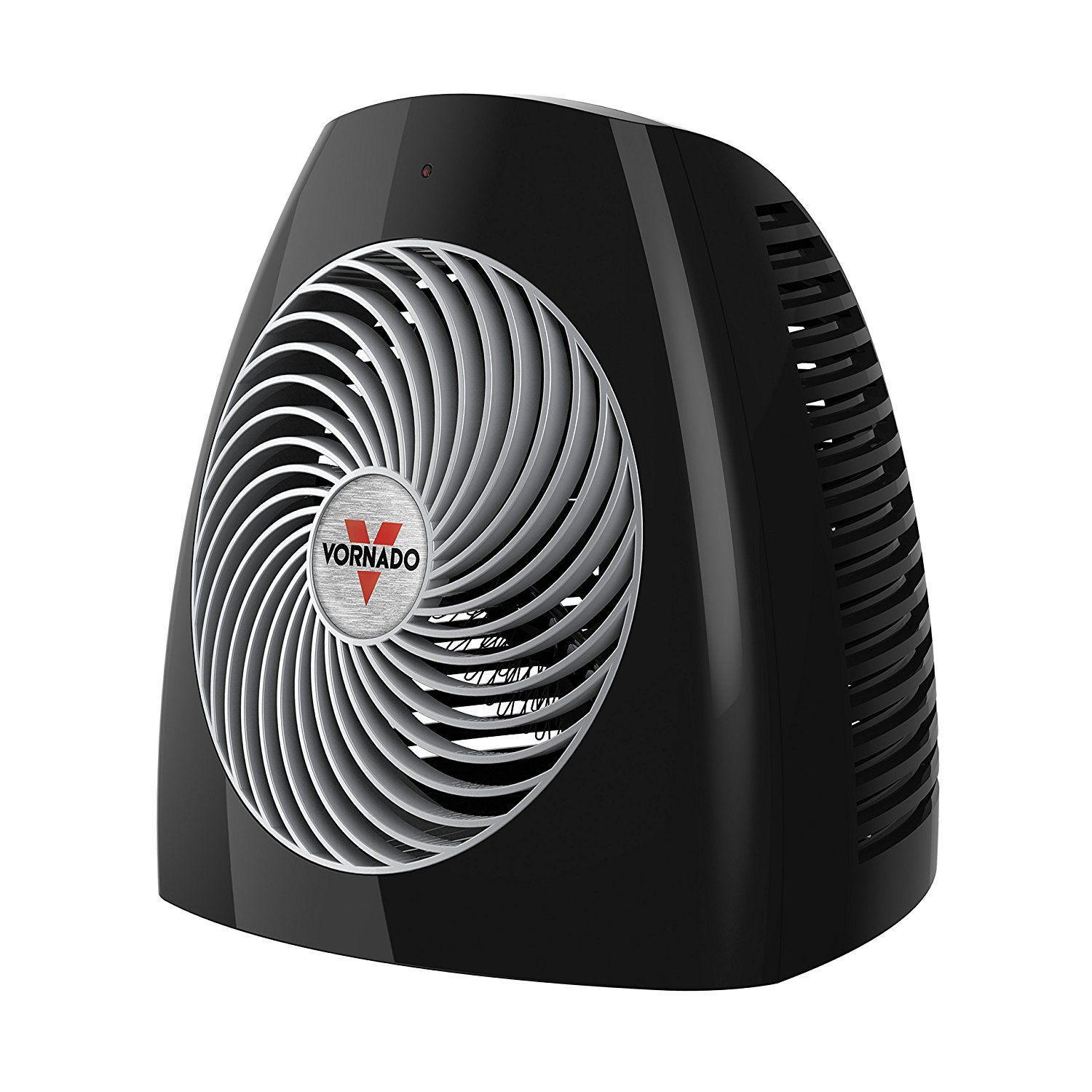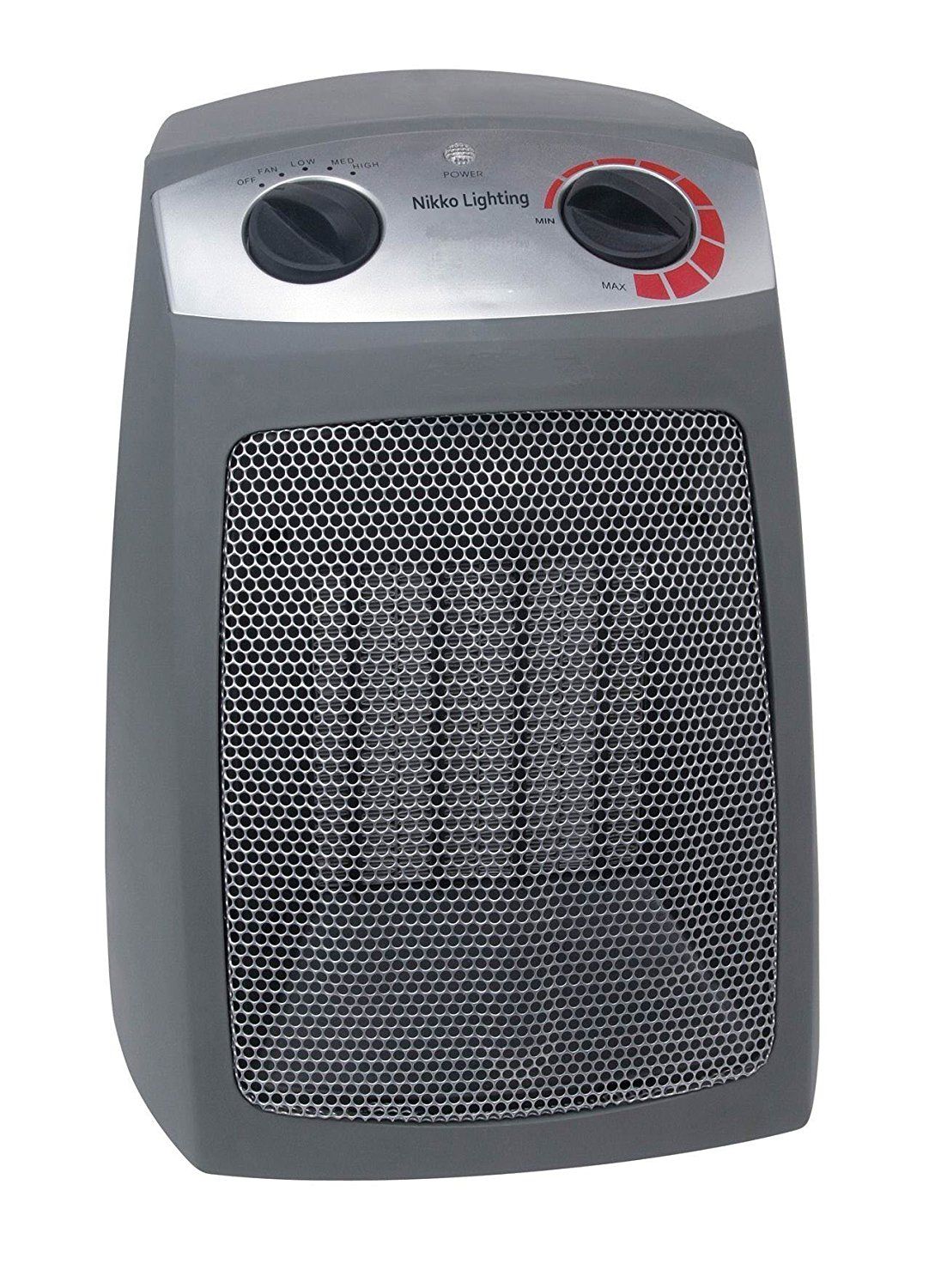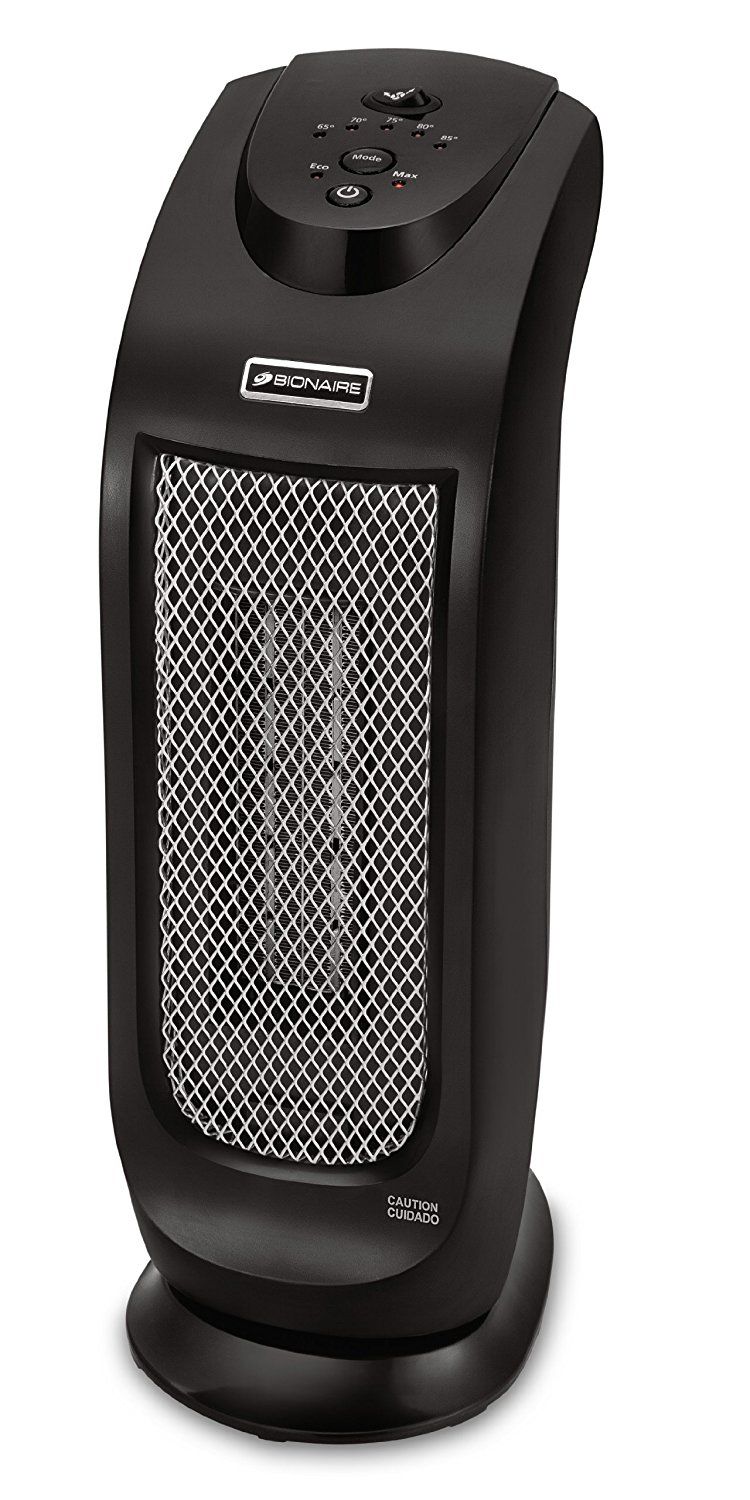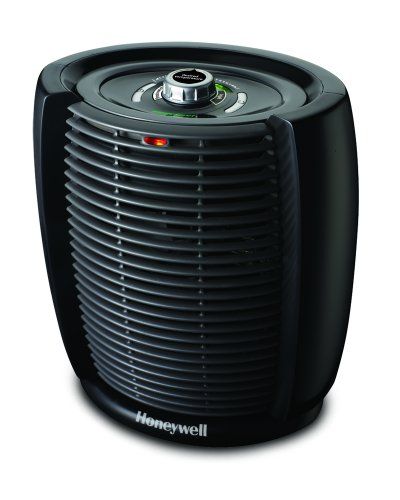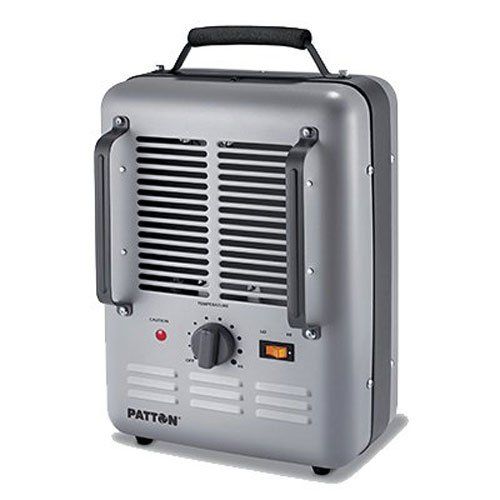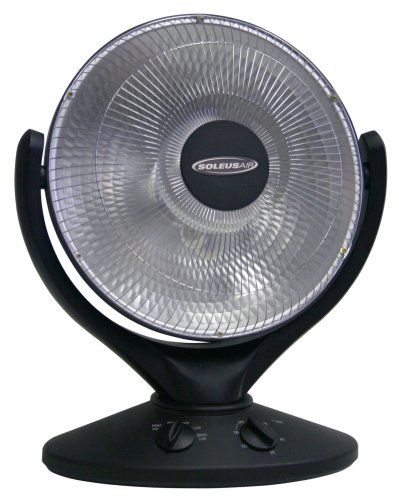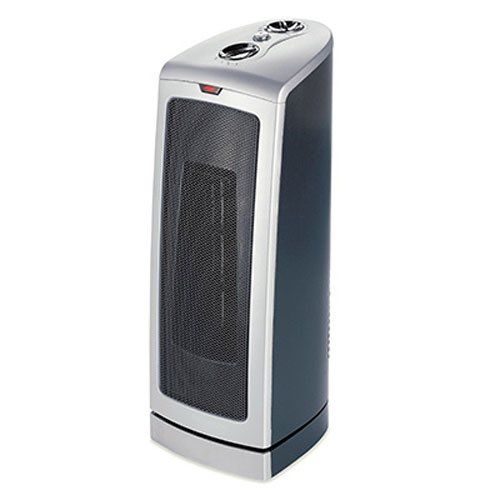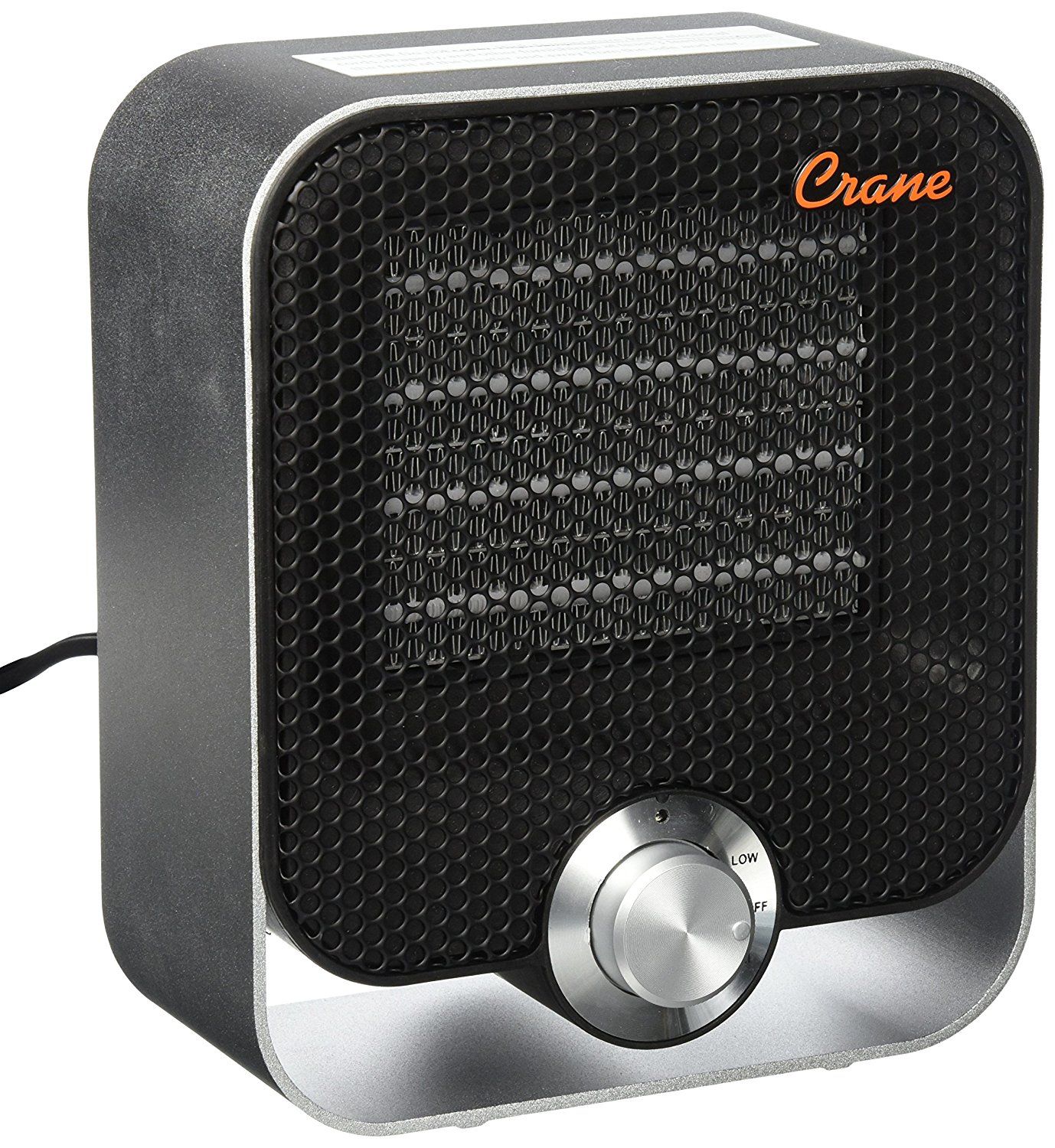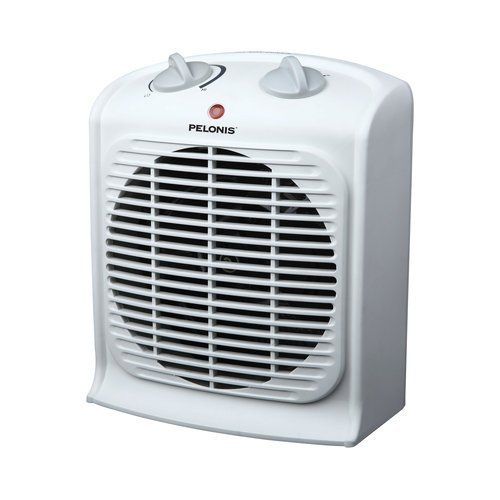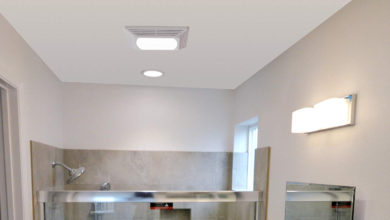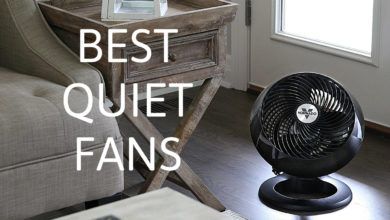With winter on the way, many of you out there will be on the lookout for a good indoor space heater, whether it’s as a standalone heating option for your bedroom or living room, or merely to complement your home central heating system. There are now loads of indoor space heaters available on the market, of widely varying quality and price, so finding the right one for you may seem a formidable task. That’s where we come in! In this article, we review what we think are 10 of the best indoor space heaters out there right now so that you can cut through the chaff and get to the cream of the indoor space heating crop. So without further ado … let’s look at some heaters!
1. Lasko 754200-Ceramic Indoor Space Heater
Specifications
- Manufacturer: Lasko
- Heat output: 1500 watts
- Material: ceramic
- Color: white
- Weight: 3.5 pounds
- Dimension: 6 by 7 by 9.2 inches
- Safety auto shut-off: yes
- Other features: adjustable thermostat, carry handle, cool to touch exterior, 3-year warranty
Review
The Lasko 754200 indoor space room heater is a compact little unit but still delivers impressive heat output; it’s perfect for placing on your desk or tabletop and warming up a confined space in a minimal amount of time – this is a great option for complementing your central heating system during the winter. You can also use it as your sole source of heat by moving it around from room to room when you need to. There are 3 heat settings to choose from (high, low, and fan only), and a maximum heat output of 1500 watts. Set the adjustable thermostat to exactly the setting you want, and this large room heater will automatically keep the temperature within your desired range, you won’t have to lift a single finger. This heater doesn’t skimp on safety either, with ‘cool to the touch’ exterior, and overheating and tilt automatic shut off mechanisms. The all-ceramic element is safety approved and sturdy to boot. The Lasko 754200 indoor heaters come with their own built-in carry handle for convenient transportation from room to room, and to top it all off it is backed by a 3-year manufacturer’s warranty as well, so you can also buy this product with peace of mind and a sense of security. This indoor mini space heater from Lasko delivers on performance without sacrificing safety, with its convenient in-built carry handle it’s super portable as well, you can use it to heat any confined indoor space you like. All in all this heater is a fine indoor space heating option, one of the best space heater for large room options out there today.
Features included
- Fantastic indoor space heating option, compact yet powerful, place it on the floor, the tabletop, or your desk or dresser. Will add extra warmth to any room, no problems. One of the best heaters for home out there
- 3 heat settings: high, low and fan only
- 1500 watts maximum heat output
- Very energy efficient also, its one of the most energy efficient space heater options out there in fact
- Adjustable thermostat, one programmed it automatically keeps the room temperature within the range you desire
- Ultra-convenient carry handle, this heater is exceptionally portable
- Safety features including overheating and tip over auto shut off mechanisms
- Also cool to touch exterior
- Comes with 3-year manufacturers’ warranty – a testament to this product’s quality and the confidence and faith the manufacturers have in it
Advantages
- Excellent heat output, works great at warming up confined spaces
- 3 heat settings to choose from
- Adjustable thermostat, this heater will automatically keep the room temperature at the level you desire
- Extremely portable and versatile with inbuilt carry handle – move it around from room to room and heat different areas of the house, as required
- The external body of the heater is specially designed to be cool to the touch
- Overheating and tip over auto shut off valves included – this heater doesn’t skimp on safety, so you can have peace of mind when using it around your children and pets
- 3-year manufacturer’s warranty
Disadvantages
- Some reviewers report that part of the heater body melted after heavy, prolonged usage on the high setting!
- A bit on the expensive side compared to some of the other products reviewed on this list
- A few customers report that the appearance of the heater is not as advertised
2. Vornado MVH Best Space Heater for Large Room
Specifications
- Manufacturer: Vornado
- Heat output: 1500 watts
- Material: stainless steel
- Color: black
- Weight: 3.8 pounds
- Dimension: 9.2 by 10.4 by 10.6 inches
- Safety auto shut-off: yes
- Other features: adjustable thermostat, 5-year warranty
Review
This efficient indoor space heater from Vortex is a fantastic way to keep your indoor living spaces warm this winter, whilst also saving money. Their whole room MHV mini space heater has three heat settings (750 watts, 1125 watts, 1500 watts), and an adjustable thermostat temperature and comfort control dial. Program it before turning it on, and it will automatically keep maintaining the room temperature and exactly the level you desire. Meanwhile, Vornado’s trademark Vortex heat-circulation mechanism smoothly and silently distributes the hot air generated around the room. No part will go unheated! Apart from the efficient and whisper quiet performance, their indoor heaters also employ the very latest in safety features technology, including a tip over auto shut off safety switch and specially designed ‘cool to the touch’ exterior. And it’s all backed by a super impressive 5-year warranty protecting you against manufacturers’ defects. So for peace of mind as well as effective, efficient and economical indoor space heating, choose this offering from the good folks at Vornado. This room heater is a great buy.
Features include:
- High-performance indoor space heater; great as a large room heater option
- Three heat settings (750 watts, 1125 watts, 1500 watts) to select from
- Vortex heat circulating mechanism distributes warm air smoothly and silently around the room
- Adjustable thermostat allows you to maintain the temperature and comfort level of your room down to the degree
- Specially designed ‘Cool to touch’ exterior
- Auto overheat and tip-over shut off mechanism
- 5-year manufacturer’s warranty – such a generous warranty really is a testament to this product’s quality
Advantages
- Very attractive price point: in terms of price, this is just about the best space heater for large room on the market right now
- Super impressive warranty (5 years) – a testament to this product’s quality
- Cool to the touch and with overheating and tip over shut off valves – you can use this heater around children and pets with peace of mind
- 3 heat settings to select from
- Adjustable thermostat for precise temperature and comfort control – all at the touch of a button too
- Very quiet also, makes next to no noise! This is a really quiet space heater put out by the folks at Vornado
Disadvantages
- No remote control, all the settings must be controlled by hand
- Vortex technology generates a bit of air disturbance, according to some customer reviews
3. Nicko Lighting Nikko Indoor Heaters
Specifications
- Manufacturer: Nicko Lighting
- Heat output: 5200 BTUs
- Material: stainless steel
- Color: black
- Weight: 4.1 pounds
- Dimension: 8 by 8 by 11 inches
- Safety auto shut-off: yes
- Other features: cool to touch housing
Review
Nicko Lighting has really outstripped themselves with this indoor fan-forced space heating offering of theirs’. It offers the prospect of guaranteed warmth and comfort for you and your loved ones, WHATEVER room in your house you place this large room heater in and NO MATTER what the time of year. There are three heat settings to choose from, and a maximum heat output of 5200 BTUs. That in itself makes this heater suitable for use as your sole source of heat this winter – although it will also nicely complement your home central heating system. Safety features include cool to the touch external housing, plus automatic shut off switch in the event your Nick Lighting mini space heater overheats or falls over (or tilts forward at least 45 degrees). The all ceramic heating element is completely sealed also. There are some really great indoor space heaters included in this list, and this personal heater from Nicko Lighting is no exception. Their indoor heaters are right up there amongst the ‘elite’ of indoor space heaters. Go out and grab yours’ today.
Features included:
- Portable indoor fan forced space heater for room, use it to add warmth or comfort to any room in your house that you please
- Simple design, with high-powered fan plus all ceramic heating element
- 3 heat settings with maximum heat output of 5200 BTUs
- Cool to the touch exterior
- Fully sealed all-ceramic heating element
- Automatic safety shut-off switches – one for if it overheats, one for if it tilts forward at least 45 degrees
Advantages
- Fully of safety features – in fact, where it comes to safety, this is one of the best space heater for large room options on the market right now
- Attractive looking quiet space heater, will fit nicely into your home’s decor
- 3 heat settings
- Puts out a good amount of heat (maximum heat output of 5200 BTUs)
Disadvantages
- Not as affordable as some of the other heaters considered on this list
- No adjustable thermostat or temperature display
- Doesn’t come with a remote control
- No oscillating setting or tilt-adjustable head for when you want more targeted airflow
4. Bionaire BCH7302-UM Tower Mini Space Heater
Specifications
- Manufacturer: Bionaire
- Heat output: 1500 watts
- Material: ceramic
- Color: white
- Weight: 5 pounds
- Dimension: 8.9 by 6.9 by 18.9 inches
- Safety auto shut-off: yes
- Other features: cool touch exterior
Review
Bionaire’s all-ceramic tower personal space heater with wide range oscillation can be placed on the floor, your desk or tabletop – you name it – and their indoor heaters will effortlessly deliver comforting warmth to all corners of the room. This is because their personal heater comes with unique wide range oscillation feature that ensures even heat distribution across your whole bedroom, lounge room, study and more. You can use this indoor space heater of theirs’ to complement your central heating this winter, or alternatively, you can use it as your sole home heating option: because it is so compact, it’s super easy to transport around the house. Choose from three heat settings (maximum heat output 1500 watts) with Bionaire space heaters for large rooms’ user-friendly LED controls. Meanwhile maintain exactly the temperature range you desire with its programmable thermostat, also accessed via the LED control panel. Another thing that should recommend this Bionaire room heater to you is how seriously it takes the safety. It comes with cool to the touch exterior, as well as auto shut off safety switches for when the element overheats, or the fan tips over. Ideal for your bedroom, living room, or any other ROOM in your house, the Bionaire BCH7302-UM mini space heater is another great indoor space heating option and a great way to round out this list of reviews.
Features included:
- Enjoy premium indoor space heating with this Ceramic Tower heater for room, you can place it in any room in your house and it will heat its surroundings quietly and quickly
- Three heat settings to choose from with maximum heat output of 1500 watts
- Programmable thermostat allows you maintain your room’s temperature within the desired range
- All settings controlled via LED display on the surface of the fan
- Cool to the touch exterior
- Automatic shut off switches for when your indoor space heater overheats or tilts over
- Compact and easy to transport around
- Backed by a one year manufacturer’s’ warranty
Advantages
- Three heat settings, maximum heat out 1500 watts; many consumers report being impressed by the heat output as well – makes this heater a good large room heater option
- Energy efficiency: this is just about the most energy efficient space heater considered on this list, according to consumers who have bought it and noticed the effect on their power bills
- Adjustable thermostat: control the temperature and comfort levels in your surroundings with the mere push of a button
- All settings controlled via user-friendly LED display
- Compact design makes it easy to move around
- Very efficient and cost-effective: this heater will certainly help you minimize your electricity bills
- Plenty of safety features
Disadvantages
- A bit on the expensive side, certainly not the best room heater in terms of price
- No remote control, settings can be controlled manually only
5. Honeywell HZ-7200 Oscillating Room Heater
Specifications
- Manufacturer: Honeywell
- Heat output: 1500 watts
- Material: stainless steel
- Color: black
- Weight: 5.9 pounds
- Dimension: 0.3 by 0.5 by 0.5 inches
- Safety auto shut-off: yes
- Other features: LED temperature display, cool touch housing, smart energy digital control, 3-year warranty
Review
The Honeywell HZ-7200 indoor space heater is a terrific option for keeping your indoor living spaces warm this winter. Here are some of the special features their personal heater contains. There are 3 heat settings to choose from, and a maximum heat output of 1500 watts. The control panel is easy to navigate and includes room temperature LED display. Luckily this Honeywell room heater doesn’t skimp on safety either, it comes with cool to the touch housing, auto shut off switch in the event that it tips over or overheats – there is also an extra wide base for added stability. And it’s all backed by a 3-year manufacturer’s’ warranty protecting you against defects in workmanship. For a good, reliable indoor mini space heater, you can’t look past the Honeywell HZ-7200. THis is one of the best products of its kind on the market today.
Features:
- Economical and efficient indoor space heater, a great option for keeping your indoor living spaces during winter
- 3 heat settings to choose from, maximum heat output of 1500 watts
- User-friendly control panel
- LED room temperature display
- Cool to the touch metal housing
- Auto shut off safety switch in the event that it tips over or overheats
- Extra wide base for additional stability, protects against falls – use this heater around children and pets and have peace of mind
- 3-year manufacturer’s warranty
Advantages
- Good heat output
- One of the most energy efficient space heater options available today also
- LED room temperature display is a welcome feature
- Lots of safety features – cool to the touch housing, anti-tilt and overheating safety switches; it also comes with an extra wide base for additional security
- Very generous product warranty – is a testament to this product’s worth and the faith the manufacturers have in it
Disadvantages
- Makes a lot of noise according to consumer reviews
- Poor quality construction and design too – some users report that the heater starts falling apart after only a few months of usage
- A little bit on the expensive side as well
6. Patton PUH680-N-U Utility Milk House Best Room Heater
Specifications
- Manufacturer: Patton
- Heat output: 1500 watts
- Material: stainless steel
- Color: black
- Weight: 5.5 pounds
- Dimension: 10.3 by 7.7 by 14.7 inches
- Safety auto shut-off: yes
- Other features: high vis power light
Review
This rugged milkhouse personal heater from Patton is absolutely perfect for your garage, shed, workshop – you can even take this personal heater with you to work on the construction site. It’s all metal casing ensures it will stand up and be counted under even the most inhospitable of weather conditions. There are three heat settings (high, low, fan only) to choose from, and an adjustable thermostat for personal comfort control that’s only the push of a button away. The fan forced technology ensures this personal space heater will distribute the warmth generated evenly and to all corners of the room. And lest you think this utility heater compromises safety for the sake of performance, it comes with front guards and auto shut-off valve in the event that it tips over. The Patton milk house heater is super portable as well with inbuilt carry handle – you can take it with you wherever you want. It even comes with a high visibility power light (battery operated) – very handy at night! This industrial grade utility milkhouse room heater from Patton is a great indoor AND OUTDOOR heating option, whether you’re using it at home or at work. Highly recommended, go out and grab YOUR version today.
Features:
- Industrial grade large room heater suitable for use at home – in your garage, shed, or workshop – or at work on the construction site, also in offices, warehouses, hospitals and more. This is one versatile heater!
- Efficient and powerful, it comes with 3 heat settings (high, low and fan only) – and a maximum heat output of 1500 watts. When it comes to energy efficiency, it’s just about the most energy efficient space heater out there right now
- Adjustable thermostat for temperature and comfort control that’s just the push of a button away
- Safety features include front guards and auto shut-off valve in the event that it tips over
- Inbuilt, oversized carry handle for ease of transportation
- High visibility power light, comes in handy during night time usage
- All metal, stainless steel housing: these space heaters for large rooms are exceptionally rugged and built to withstand whatever nature hurls at them
Advantages
- Sturdy and rugged design, this heater is built to stand the test of time – you will get many years of solid usage from it
- Good heat output, 1500 watts maximum
- Adjustable thermostat feature included
- High visibility power light a useful feature also
- Front guards and auto shut off safety switch in the event that it tips over
Disadvantages
- Quite noisy according to several reviews
- A bit on the expensive side also, compared to other products reviewed in this article
- Not as generous a warranty as with some of the other products reviewed here
7. Soleus Air HE08-R9-21 Reflective Oscillating Personal Heater
Specifications
- Manufacturer: Soleus Air
- Heat output: 800 watts
- Material: stainless steel
- Color: black
- Weight: 6 pounds
- Dimension: 10.8 by 21.2 by 10.8 inches
- Safety auto shut-off: yes
Review
The reflective heating technology utilized by the Soleus Air HE08-R9-21 large room space heater makes this product unique among indoor space heaters. Instead of heating up the air in a room, it directly and instantly heats up nearby objects or persons – which feature makes it so much more efficient and cost-effective than the conventional fan heaters that dominate this market. Soleus’ indoor heaters also come with a push button oscillating head function, and adjustable tilt head – so that you can achieve targeted heating and direct warmth to exactly those parts of the room that need it most – and a two hour timer so that you can turn them on in your room of choice then forget about them. What’s more, this room heater is completely noiseless and free of air turbulence or disturbances. This personal heater takes safety seriously as well: it comes with its own automatic shut-off valve in the event that it tips over. For an efficient and affordable indoor space heater, with lots of features and mod-cons, consider this indoor space heater offering from Soleus Air, you won’t be disappointed.
Features
- High-quality indoor space heater for the room, you can use it in any part of the house you want and it will effectively heat up its surroundings. This is right up there with the best space heater for large room options out there at the moment
- Utilizes cutting-edge reflective heating technology that directly and instantly warms nearby persons and objects – instead of the air. That fact alone makes this mini space heater loads more efficient – and thus cost-effective- than most fan forced heaters out there on the market
- Also, whisper quiet and generates NO air turbulence or disturbances
- Cool to the touch exterior and tip-over automatic shut off valve – if you have children and pets at home, you can use this large room heater with peace of mind
- Push button oscillating head function and tilt adjustable head – enables you to achieve targeted heating and direct warmth to exactly the locations in the room you desire
- Two-hour timer means you can turn it on and then forget about it
Advantages
- Far more efficient than most heaters as it directly heats the person rather than the surrounding air first, because it has a tilt adjustable head you can also direct the heat in whatever direction you like. This is just about the most energy efficient space heater on the market right now
- Three heat settings to choose from
- Free of noise and air disturbance and turbulence, this is one quiet space heater!
- Oscillating head function, plus tilt adjustable head for when you want targeted, directed heating
- Two-hour timer allows you to turn it on and then walk away
- Cool to the touch and with tip over auto shut off valve
Disadvantages
- A little bit on the flimsy side with (apparently) plastic design
- Several customers report that the unit failed after only a few months of usage!
- Not as affordable as some of the other indoor space heaters out there
- No adjustable thermostat, you have to adjust the heat settings manually yourself
- No remote control included either – again you have to adjust all the settings manually
8. Lasko 5307 Energy Efficient Space Heater
Specifications
- Manufacturer: Lasko
- Heat output: 1500 watts
- Material: ceramic
- Color: grey
- Weight: 4.6 pounds
- Dimension: 5.6 by 5.9 by 16 inches
- Safety auto shut-off: yes
- Other features: adjustable thermostat, push-button oscillation, 3-year warranty
Review
The Lasko 5307 indoor space tower heater is perfect for table or floor use, just plug it into any standard power outlet and it will heat up its surroundings no problems whatsoever. There are three heat settings (including fan-only setting) to choose from, and a maximum heat output of 1500 watts. Cutting edge Comfort Air Technology also easily propels warmth to all corners of the room. AND there is a push button oscillating head feature which serves the same function. Also included with this indoor space heater is an adjustable thermostat so that you can effortlessly keep the room temperature within the desired bounds: programme it to the temperature you want, then sit back and let it do all the work. But that’s not all! If you thought this room heater might overlook safety in favor of performance, then think again. Built-in safety features like tip-over and overheating automatic shut off valves, ensures you can use this personal space heater around children with peace of mind and a sense of security. The ceramic heating element is safety approved as well. Last but not least, this personal heater from Lasko is backed by a 3 years’ warranty protecting against manufacturers’ defects. Lasko has brought out some really good products in this field and this mini space heater of theirs’ is absolutely no exception. Well worth the investment of time and money. Highly recommended!
Features:
- Versatile and compact tower heater, place it on the floor or tabletop and it will heat its surroundings no problems. This heater is a great option for complementing your central heating system this winter and adding extra warmth to your house. It’s one of the best heaters for home available on the market right now
- Three heat settings – low, high and fan only
- Maximum heat output 1500 watts
- Comfort Air Technology and Push Button Oscillation feature ensures warmth is distributed to all corners of the room
- Adjustable thermostat for comfort control, keep your room’s temperature within the bounds determined by YOU
- Comes fully assembled
- Built-in safety features including overheating and tip-over auto shut off mechanism – use this heater around your children and pets with peace of mind and a sense of security
- Backed by a 3-year manufacturer’s warranty
Advantages
- Impressive performance and heat output, this heater for room will heat up any room quickly and effectively
- Attractive and stylish looking fan, will fit into your home’s decor very nicely
- Energy efficient – it’s one of the most energy efficient space heater options on the market today
- Minimal noise and air disturbance, you won’t even notice this heater is running!
- Adjustable thermostat for automatic temperature and comfort control
- Push button oscillating head feature
- Three heat settings to choose from also
- Compact and portable – move it around the house with ease
- Safety features including overheat and tip-over shut off switches
- Generous warranty – three years – really attests to this product’s quality
Disadvantages
- No remote control, all the settings have to be changed manually
- A bit on the expensive side compared to some of the other products reviewed here
9. Crane USA Personal Large Room Heater
Specifications
- Manufacturer: Crane USA
- Heat output: 1200 watts
- Material: ceramic
- Color: black
- Weight: 4 pounds
- Dimension: 8.5 by 7 by 5.5 inches
- Safety auto shut-off: yes
Review
Crane USA’s ceramic personal heater is compact yet powerful, this is a GREAT option for keeping your indoor living spaces warm during those frosty winter months. There are two heat settings to choose from with this personal heater, high and low, with an inbuilt fan for circulating the warm air generated quickly and efficiently.Crane’s indoor heaters are whisper quiet and free of any air disturbance or turbulence also. And because they are so compact you can easily transport these heaters around to whatever room in the house you desire. With it’s enclosed ceramic element, cool to the touch housing, and auto shut off safety switch in the event that it overheats, this mini space heater is number one for safety as well. Finally, it comes with a stylish aluminum finish that makes it attractive to look at – this heater will fit right into your home’s decor. This indoor space heater from Crane USA comes with all the mod-cons, whilst still being extremely compact and affordable. If you want a room heater that has it all, but won’t break the bank either, then you’ve arrived at the right place with Crane USA, this is just about the best space heater for large room on the market today. Go out and grab one today.
Features:
- High-performance indoor space heater, suitable for all uses and rooms. One of the best heaters for home on the market today
- Two heat settings and maximum heat output of 1200 watts
- Whisper quiet performance
- Compact build makes this indoor space heater easy to transport around
- Shut off safety switch in the event that it overheats
- Cool to the touch external housing
- Stylish aluminum housing, this heater will also look the part in your home
Advantages
- Very good heat output, according to customer reviews; makes it a fine option as a large room heater
- Attractive price point
- Well designed and with attractive finish, it will really look the part in your house
- Auto shut off safety valve in the event that it overheats
- Very quiet also, no noise pollution – this is a very quiet space heater
Disadvantages
- No adjustable thermostat, you have to change the heat settings yourself
- The front grill gets very hot whilst it is running, according to some customers
- No handle
- No remote control
10. HF-0020T Fan-Forced Pelonis Space Heater
Specifications
- Manufacturer: Pelonis
- Material: stainless steel
- Color: black
- Weight: 2.7 pounds
- Dimension: 10 by 8.7 by 5.4 inches
- Safety auto shut-off: yes
Review
The Polonis HF-0020T fan forced indoor room heater enables you to heat just about any room in your house with almost no effort at all required on your part. With super powerful fan forced heat output including three heat settings to choose from – low, medium and high – there is also an adjustable thermostat enabling you to control the temperature and level of comfort in your environment down to the finest detail. There is also a fan only mode for good measure. And lest you feared this pelonis space heater might sacrifice safety for the sake of performance, then think again! This pelonis space heater comes with its own automatic shut-off feature in the event that the ceramic heating element (sealed) overheats. Its housing is also designed so as to be cool to the touch. When it comes to portability and ease of transportation, this large room space heater has its own in-built carry handle, so you can move it from room to room with ease. That makes it a great option if you don’t have central heating – you can simply carry this heater around the house to the areas that need heating, as they need heating. Although it will also complement your home central heating system nicely. Truth be told, this portable pelonis space heater is one of the most versatile indoor space heaters out there today. Use it to keep virtually any room in your house toasty warm during the winter months. Suitable as a complement to your home’s central heating, or as a standalone personal heater. This indoor space heater from Polonis is well and truly worth the investment of money as well as time.
Features:
- Home space heater, this large room heater will quickly warm up any room in your house that you place it in
Three heat settings (low, medium and high), plus fan-only mode - Inbuilt adjustable thermostat, allows you to control the temperature and comfort in your surroundings with the mere turn of a dial
- Automatic shut-off safety switch in the event that it overheats or tips over
- Cool to the touch housing
- Inbuilt carry handle, transport the pelonis space heater around from room to room in your house with ease
Advantages
- Very attractive price point – in terms of sheer price, this is one of the best space heaters for large rooms out there on the market today
- Adjustable thermostat
- One of the most energy efficient space heater options out there
- Three heat settings plus fan-only mode
- Housing is designed to be cool to the touch
- Automatic shut off safety switch in the event it overheats
- Inbuilt carry handle is a welcome addition also with this pelonis space heater
Disadvantages
- No remote control
- No oscillating function or tilt-adjustable head feature – useful functions to have in any best room heater on the market candidate
Conclusion
In this review article, we have looked at some of the best indoor space heaters out there on the market today. There are some really good quality little heaters in this selection – when it comes to performance, price and additional features – so hopefully at least one of them suits your particular requirements and you don’t have to waste time shopping around for the right heater. Happy heating!

